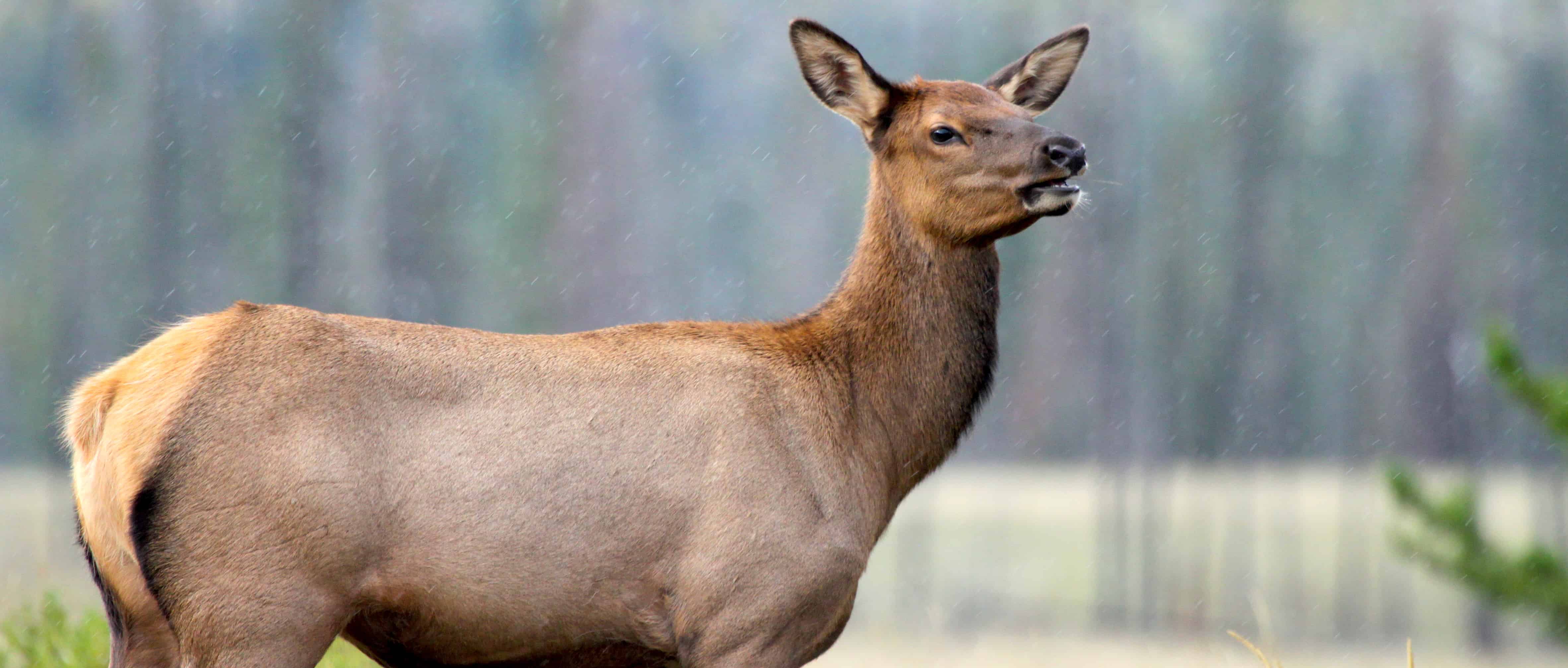Share this article
Aging elk learn to stay clear of hunters
Mark Boyce couldn’t help but notice the difference in the elk he was studying in Alberta. When hunting season arrived, their behavior visibly changed. As the roads became busy with hunting traffic, the elk that had been plentiful along the roads disappeared.
“Every hunter knows that,” said Boyce, a TWS member and professor of biological sciences at the University of Alberta. “Their behaviors change when the hunting season is in place. That’s no big surprise.”
What biologists didn’t know was that this is learned behavior, and the learning increases as the elk age. In a six-year study of female elk (Cervus elaphus) in the wilds of Alberta and British Columbia, Boyce and fellow researchers found that as they become older, the elk become more adept at avoiding hunters, seeking areas that are steeper and provide more cover when hunters are present.
By the time they reach 9 years of age, Boyce said, “those females are almost bulletproof.”
Since the team published its findings in the journal PLOS One on June 14, their study has gotten tremendous attention, including articles in the New York Times, Smithsonian.com and Motherboard.
“It’s just been amazing how much media attention this paper has gotten compared to others,” Boyce said, “but I guess it’s just something that catches the attention.”
Using telemetry and field observation, the researchers set out to determine if the behavior they had seen was simply a result of human selection. If less wary elk were taken by hunters, maybe it would leave the more cautious elk to age.
Or, they wondered, was the behavior the result of both selection and learning?
“If learning with experience also is involved,” lead author Henrik Thurfjell wrote, “then animals should adjust their behavior as they age.”
That’s exactly what they did, researchers found.
“Bold” elk that bolted into open areas were likely to be taken by hunters, Boyce said, but “shy” elk that avoided them survived. They adopted these behaviors more as they grew older, he said, and lived to pass on these behaviors to young elk.
“The fact that this learning behavior occurs ensures we have older-aged animals in the population,” Boyce said. “It ensures the resiliency of the population and helps to ensure the sustainability of our harvest management. It’s sort of a reinforcement of the way we manage — it seems to be working really well.”
Between 2007 and 2012, Thurfjell, Boyce and Simone Ciuti, a researcher with Germany’s University of Freiberg, studied elk in 46,000 square kilometers of southwest Alberta and Southeast British Columbia, from grasslands in the east to forests and mountains in the west.
Using net guns from helicopters to capture them in heavy snowfields, they attached GPS collars and gathered data from 49 female elk. They focused on females, Boyce said, because males live short lives in this popular hunting area.
The researchers discovered that female elk move less as they age, making themselves less susceptible to hunters. They also distinguish between rifle season and archery season, clinging to more rugged terrain during archery season, when hunters must be closer to shoot them.
Close to roads, older female elk used rugged terrain more often — especially at dawn and dusk — than young ones, the biologists found, and although the elk relied less on forest cover as they aged, they tended to cling to forests when they were close to roads and most likely to be spotted by hunters.
“The likelihood that a female elk will be shot by a hunter decreases markedly with age,” Thurfjell wrote, until by the time they reach 9 or 10 years old, they are “almost invulnerable to human hunters.”
Header Image: A young female elk stands in a meadow in Canada, where researchers have found that female elk learn with age to avoid hunters. ©Mark Boyce








